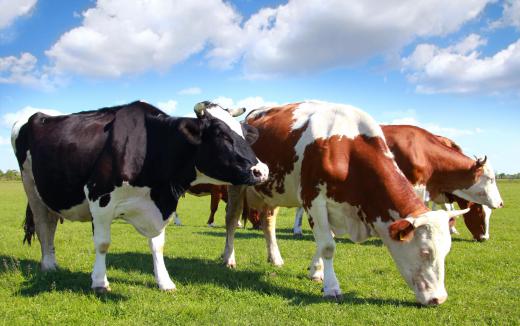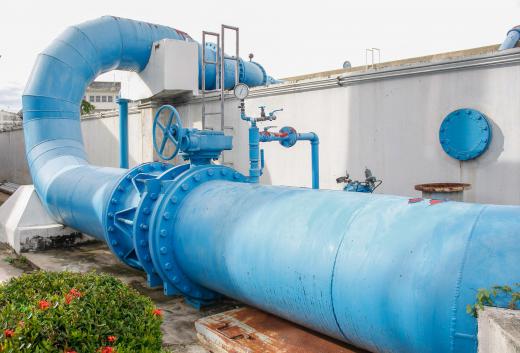What is Biogas?
 Mary McMahon
Mary McMahon
Biogas is a gas which is produced as a byproduct of certain types of anaerobic fermentation or gasification. Unintentional production of biogases has been an ongoing issue in many regions of the world, and several nations have also looked to biogas as a potential source of clean energy. India and China have both invested extensively in creative biogas technology to provide fuel for their citizens and there are a number of interesting applications for this gas which appeal to people who are interested in sustainable energy and the health of the environment.
The basis for biogas is organic material such as food scraps and feces which are held in an anaerobic area, which can range from a storage tank which is not ventilated to a device which is specifically designed to produce gases. The conditions attract anaerobic bacteria, which start to break down the organic material, producing methane and carbon dioxide as a byproduct. Another type of biogas which includes hydrogen, nitrogen, and carbon monoxide can be obtained through the gasification of biomass such as wood or rice husks, a technique which is used to manufacture gas industrially.

The gases produced through anaerobic fermentation or gasification are combustible in addition to having a strong smell which makes them stand out to the human nose. Methane leaks from landfills are an ongoing problem, as is the production of biogas in poorly maintained compost piles, manure lagoons, and outhouses. Spontaneous fires and explosions caused by buildups of gas have been recorded in many regions of the world, illustrating a major problem which needs to be confronted by waste management companies. When this gas is trapped, however, it can be made useful, instead of just being a nuisance.

Trapped biogas can be used to power stoves for cooking and heating, in addition to other applications. By trapping the gases, people can prevent methane from reaching the atmosphere, thereby reducing degradation caused by methane gas. The ability to turn waste products into something which can be utilized is also rather convenient, especially in developing countries, where available resources may be limited. Furthermore, by turning biomass into biogas, people can address issues like sewage treatment, ensuring that raw sewage is not released into the natural environment.
Devices for generating methane are known as biogas digesters or anaerobic digesters. Wood biogas can be produced as gasification plants, and is most commonly made in regions where scraps of wood and other woody materials are in ample supply.
AS FEATURED ON:
AS FEATURED ON:












Discussion Comments
I wonder if the government would really be keen on using biogas to provide additional energy?
Biogas when cleaned and concentrated can be made into a replacement for natural gas that is both affordable and environmentally friendly.
With our demand for oil and the reliance of natural gas being based on its market price, I think it is no wonder that officials aren't jumping on a cheaper alternative. The government makes a fortune off of gas and oil, more so than the companies themselves.
Do you think that the government will ever put the people and environment before their own pocketbooks?
I think that the government really needs to invest in more alternative energy, and biogas sounds like a very viable alternative. We all produce the waste to make an unlimited supply of biogas, by going to the bathroom and producing table scraps. Finding a way to fully utilize this waste would be an amazing breakthrough for the environment.
While some people may be squeamish about the idea of using human fecal matter to create a source of energy, I think that this is ingenious. There is nothing wrong with using what nature gave us. Besides, where do you think some fertilizer comes from?
Post your comments